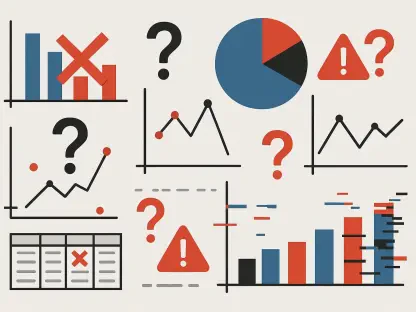In a recent exciting development , OpenAI has announced a new feature for its ChatGPT platform, allowing users on the free tier access to image generation using the DALL-E 3 model. This feature, which was previously only available to ChatGPT Plus subscribers, represents a significant step in making advanced AI tools more accessible to the general public. Here, we explore the implications and functionalities of this update and how it can impact various aspects of user experience and the broader tech landscape.
Expanding Access to AI Art
OpenAI’s decision to bring DALL-E 3’s capabilities to free-tier users marks a pivotal moment in AI democratization. Before this change, these sophisticated tools were primarily accessible to a niche group of paying users. Now, anyone using ChatGPT can generate up to two images daily, significantly lowering the entry barrier for AI-generated art. This shift opens doors for hobbyists, educators, students, and everyday creatives to experiment with AI without needing a subscription, effectively democratizing high-tech features.
This move is part of a broader trend in the tech industry to make powerful tools available to as many people as possible, fostering innovation and creativity. By allowing wider access, OpenAI is enabling individuals to explore new forms of artistic expression and bringing advanced capabilities to those who may have been previously excluded. The decision to extend these features to the free tier reflects a commitment to inclusivity and societal benefit, ensuring that AI’s transformative potential is available to a diverse audience.
Simplified Image Generation Process
One of the standout features of this update is the seamless integration of DALL-E 3 with ChatGPT. Generating images can sometimes be a complex and technical task, often requiring intricate and detailed prompts. However, ChatGPT notably simplifies this process by assisting users in crafting these prompts, making the overall experience far more user-friendly. This not only broadens the spectrum of potential creative expressions but also allows users who might not have the technical expertise to experiment with AI.
Imagine needing an image of a futuristic city; ChatGPT can guide users to specify elements like flying cars, towering skyscrapers, and neon lights, resulting in a more accurate and visually appealing output. The guided prompting feature enhances usability, ensuring that users can achieve high-quality, relevant images with minimal effort. This improvement aims to make high-end technology approachable and accessible, giving users a more intuitive way to interact with AI capabilities and can significantly enhance the creative process.
Phased Rollout and User Experience
OpenAI has begun a phased rollout of this new feature. While not all users may have immediate access, many have already started exploring the new capabilities. The staggered rollout serves multiple purposes: it helps manage server load, ensures that bugs can be identified and resolved gradually, and provides a smoother user experience overall. This method allows OpenAI to gather crucial user feedback during the initial stages, which can be used to fine-tune and enhance the service before a full-scale release.
The tactical phased rollout approach exemplifies best practices in responsible software deployment, balancing user demand with technical feasibility. Allowing gradual access enables OpenAI to monitor system performance, user interaction, and satisfaction levels without overwhelming server capacity. It also reflects a strategy that prioritizes user experience and service reliability, demonstrating OpenAI’s commitment to delivering high-quality, stable, and user-friendly technology solutions while ensuring that the broader user base benefits optimally.
Ethical and Safety Considerations
Alongside expanding access, OpenAI has been transparent about the ethical implications of its technology. The release of a safety assessment for their latest GPT-4 model underscores this commitment, diving into potential risks and the measures put in place to mitigate them. This proactive stance on AI safety reflects an understanding of the broader context in which these technologies operate, recognizing the need to align technological advancements with societal norms and values. This approach is crucial in maintaining public trust and ensuring responsible technological progress.
Moreover, OpenAI’s ongoing dialogue with regulatory bodies highlights the company’s engagement with societal expectations and legal frameworks. A recent letter from Democratic members of Congress to OpenAI’s CEO Sam Altman sought details on safety protocols, underscoring the heightened regulatory scrutiny in the AI sector. By being proactive and transparent, OpenAI demonstrates a genuine commitment to ethical considerations and safety, fostering a responsible tech environment that prioritizes user welfare and societal impact over mere innovation for innovation’s sake.
Enhanced Creativity and Practicality
With the ability to generate images now at their fingertips, an extensive range of users can explore countless creative and practical applications. Educators can create visual aids for lessons, marketers can design unique campaign visuals, and social media enthusiasts can craft bespoke content—all without needing artistic skills. This ease of use allows for a more expansive utilization of AI-generated art, giving users the tools to enhance their work and personal projects creatively and practically.
The creative potential unlocked by providing such powerful tools to a broader audience is immense. The update lowers creative barriers, enabling individuals from various backgrounds to partake in high-tech artistic creation. By merging practical functionality with creative freedom, OpenAI’s update not only empowers users but also catalyzes a wave of inclusive innovation. This reflects a future where technology serves as an enabler of creativity, providing the means for individuals to express themselves and bring their visions to life through accessible and advanced AI tools.
Strategic Rollout and Future Directions
The staggered activation of features is not just a tactical necessity but also an indication of OpenAI’s thoughtful strategy. By gradually enabling access to DALL-E 3 for free-tier users, OpenAI ensures its servers are not overwhelmed, that user experience remains high, and that valuable feedback can be collected and acted upon promptly. This strategic approach sets a precedent for future releases, showcasing OpenAI’s dedication to responsible and user-centric advancement of AI capabilities.
Looking ahead, this staggered rollout approach highlights OpenAI’s commitment to understanding and addressing user needs while maintaining high standards of service quality and innovation. It prepares the groundwork for future expansions and updates, embedding a culture of thoughtful, user-informed development within the company. This balanced strategy underscores the importance of not only pioneering technological innovation but doing so in a manner that respects and acknowledges the user community’s practical considerations and experience.
Final Thoughts
OpenAI has recently rolled out an exciting update for its ChatGPT platform, granting users on the free tier access to image generation using the DALL-E 3 model. This feature had previously been exclusive to ChatGPT Plus subscribers, but its release to the wider user base marks a significant milestone in democratizing access to advanced AI tools.
By making such sophisticated technology available to everyone, OpenAI is not only enhancing user experience but is also likely to spur creativity and innovation across various fields. Users can now generate detailed and high-quality images directly within the ChatGPT interface, which can be particularly valuable for tasks ranging from creative projects to educational material and even professional presentations.
Additionally, this update is expected to have broader implications for the tech landscape, driving competition among AI developers and prompting improvements in similar platforms. It can also lead to new use cases and applications that were previously limited by accessibility constraints. This move underscores OpenAI’s commitment to making cutting-edge AI more inclusive, offering a glimpse into a future where advanced tools are within everyone’s reach.









